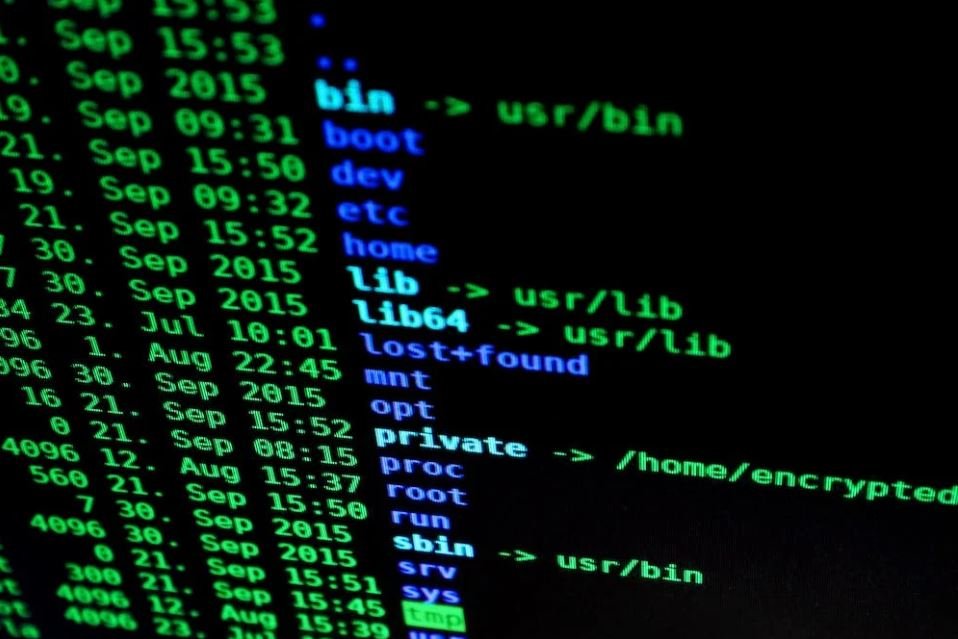Footage and Video Difference
In the world of media production, the terms “footage” and “video” are often used interchangeably, but they actually have distinct meanings. Understanding the difference between these two terms is essential for anyone involved in the creation or consumption of visual media.
Key Takeaways
- Footage and video are two different terms with separate meanings.
- Footage refers to raw, unedited film or digital recordings.
- Video is the final product that results from editing and post-production.
- Footage is the material used to create videos.
- The terms are often confused or used interchangeably, but it is important to recognize their distinctions.
Footage encompasses the raw, unedited material captured during a film or video shoot. It can include everything from scenic shots to close-ups, interviews, or action sequences. Footage is typically the starting point for any video project as it provides the raw material to be edited and transformed into a finished product.
Video, on the other hand, is the final product that results from the process of editing the footage. It is the completed, edited version of the raw material. Video encompasses the creative decisions made during the post-production process, such as selecting specific shots, arranging sequences, and adding effects or sound. The video is what is ultimately delivered to the audience.
Comparing Footage and Video
To further understand the distinctions, let’s compare footage and video side-by-side:
| Footage | Video |
|---|---|
| Raw, unedited material | Edited and finalized product |
| Used as the starting point | Delivered to the audience |
| No visual effects or sound additions | May have visual effects and sound enhancements |
Table 1: A comparison between footage and video.
While both footage and video are essential in the creation process, it’s important to understand their roles and differences. Without footage, there would be nothing to edit or create a video from. And without the final editing process, the raw footage remains disjointed and lacks coherence.
One interesting point to note is that the technique of storyboarding, where the entire video is planned and visualized beforehand, is primarily used during the video creation process rather than during footage acquisition.
Footage Formats
Footage can come in various formats, depending on the equipment used and the intended application. Some common footage formats include:
- High Definition (HD)
- Ultra High Definition (UHD)
- 4K and 8K resolution
- Timelapse
- Slow motion
Table 2: Different footage formats.
Video Editing Software
To transform footage into a polished video, editors use specialized software. Some popular video editing software include:
- Adobe Premiere Pro
- Final Cut Pro X
- Davinci Resolve
- Avid Media Composer
Table 3: Notable video editing software.
In conclusion, understanding the difference between footage and video is crucial for anyone involved in media production. Footage represents the raw material, while video is the edited and finalized product. Both play significant roles in the creation process, and using the appropriate terminology helps ensure clear communication within the industry.

Common Misconceptions
1. All footage is the same as a video
One common misconception is that footage and video are interchangeable terms. However, they are not the same thing. It’s important to understand the difference between the two.
- Footage refers to raw, unedited, and unprocessed audiovisual content that is usually captured during an event or a recording session.
- Video, on the other hand, refers to the edited and processed version of footage, often including additional visual effects, transitions, and other modifications.
- Footage is often used as a primary source for creating videos, but it undergoes various editing processes before becoming a final video product.
2. Footage and video have equivalent quality
Another common misconception is that footage and video have similar quality. However, this is not the case, as the quality can differ significantly depending on various factors.
- The quality of footage primarily depends on the equipment used to capture it, such as cameras, microphones, and other recording devices.
- Video quality, on the other hand, is influenced by the editing process, compression techniques, and overall post-production effects applied to the footage.
- While high-quality footage can lead to high-quality videos, it is crucial to understand that the two terms are not synonymous and that video quality relies on more than just the original footage.
3. Footage and video are used interchangeably
There is a common misconception that the terms “footage” and “video” can be used interchangeably in various contexts. However, this is not always accurate, as their appropriate usage depends on the specific situation.
- When discussing the process of recording an event or capturing raw audiovisual content, the term “footage” is more appropriate.
- On the other hand, if the discussion revolves around the final edited product that has gone through post-production, “video” is often the more suitable term to use.
- It’s essential to differentiate between the two terms to ensure clear communication and to avoid any confusion in the media production industry.
4. Footage and video are synonymous with movies
Many people believe that the terms “footage” and “video” are only relevant to the creation of movies. However, this is a misconception, as these terms have a broader application and are used in various other contexts.
- Footage is used in industries such as photography, journalism, documentaries, live broadcasting, commercials, and even scientific research.
- Video production extends beyond cinema and can be found in fields like advertising, marketing, training, education, and social media content creation.
- The misconception that footage and video are exclusive to the movie industry overlooks the significant role they play in multiple other areas.
5. Only professionals can work with footage and video
It is often believed that only professionals, like filmmakers or video editors, are capable of working with footage and video. However, this misconception undermines the accessibility and usability of these terms for individuals from different backgrounds.
- In the era of smartphones and user-friendly editing software, anyone can capture and edit footage to create their own videos.
- Platforms like social media and video-sharing websites have made it possible for amateurs and enthusiasts to share their footage and videos with a wide audience.
- While professionals possess specialized skills and knowledge, the usage and creation of footage and video are not exclusively limited to them.

Footage and Video Difference
Footage and video are terms often used interchangeably, but they have distinct differences. Footage typically refers to raw, unedited video material, while video refers to a finished product that has been edited and processed. Understanding the difference between footage and video is essential for anyone involved in video production, editing, or content creation. The following tables provide various points and data that highlight the differences between footage and video.
Distribution Channels
One key difference between footage and video lies in their distribution channels. While footage is mainly distributed to professional users, such as filmmakers and editors, video content is made accessible to a broader audience through various platforms. The table below shows the distinct distribution channels for footage and video.
| Footage | Video |
|---|---|
| Stock footage libraries | Television broadcast |
| Archives and databases | Online streaming platforms |
| Production houses and studios | Social media platforms |
Quality and Format
The quality and format of footage and video also differ significantly. While footage is often captured in its original resolution and format, video content undergoes editing processes that can enhance or alter its quality and format. The following table showcases the contrasting aspects of quality and format in footage and video.
| Footage | Video |
|---|---|
| Raw and unedited | Edited and processed |
| Original resolution | Altered resolution |
| Various formats (e.g., RAW, ProRes) | Standard formats (e.g., MP4, AVI) |
Usage and Purpose
Another crucial distinction between footage and video lies in their intended usage and purpose. Footage is primarily captured as raw material for specific projects, while video content aims to convey a specific message or story to the audience. The subsequent table illustrates the contrasting aspects of usage and purpose in footage and video.
| Footage | Video |
|---|---|
| Raw material for editing | Finalized content |
| Used in film production and documentaries | Intended for entertainment or information purposes |
| Component of creative projects | Stand-alone media |
Cost and Access
The cost and accessibility of footage and video content can also vary significantly due to their different characteristics. While footage is often more costly and restricted, video content can be more affordable and readily accessible to the general public. The table below highlights the divergent aspects of cost and access for footage and video.
| Footage | Video |
|---|---|
| Expensive due to licensing and usage rights | Can be free or offered at varying price points |
| Access restricted to professionals or license holders | Available to the general public |
| Higher production costs | Can be produced on a limited budget |
Editing and Manipulation
Editing and manipulation play a significant role in differentiating footage from video. While footage generally undergoes editing to become video content, video can also undergo additional manipulation for artistic or storytelling purposes. The subsequent table provides insights into the dissimilarities in editing and manipulation between footage and video.
| Footage | Video |
|---|---|
| Basic edits for organization and selection | Extensive editing for storytelling and visual enhancement |
| Primary focus on content selection | Focus on narrative structure and flow |
| No or minimal visual effects | Utilizes visual effects, color grading, etc. |
Usage in Documentaries and Films
Documentaries and films often rely on both footage and video content to convey their narratives effectively. Footage is employed to present raw material, while video content combines various elements to create a cohesive and engaging viewing experience. The subsequent table demonstrates the usage of footage and video in documentaries and films.
| Footage | Video |
|---|---|
| Provides factual evidence and visuals | Combines footage, audio, and effects for storytelling |
| Supports interviews and historical context | Includes interviews, B-roll, and reenactments |
| Captures real-life events | Delivers a narrative through edited sequences |
Usage in Advertising and Marketing
Both footage and video content hold significance in advertisement and marketing strategies. Footage provides marketers with the foundation to create captivating promotional material, while video content allows for creative editing and incorporation of branding elements. The table below exemplifies the usage of footage and video in advertising and marketing.
| Footage | Video |
|---|---|
| Visual material for commercials | Infuses branded elements and storytelling |
| Single shots or scenes | Multiple shots edited for aesthetic appeal |
| Conveys essential product information | Evokes emotions and engages target audience |
Impact on Audience
The impact on the audience can vary significantly based on whether they are exposed to footage or video content. Footage may provide a sense of authenticity and realism, while video content offers a more refined and polished viewing experience. The subsequent table elucidates the diverse impacts of footage and video on the audience.
| Footage | Video |
|---|---|
| Provides a raw and unfiltered perspective | Offers a curated and crafted visual experience |
| Evoke emotions through realistic portrayals | Engages through intentional storytelling techniques |
| Highlights the reality and authenticity of events | Allows for controlled narrative and aesthetic appeal |
Digital vs. Physical Distribution
With advancements in technology, digital distribution has become the norm for both footage and video content. However, physical distribution still holds relevance for certain scenarios. The subsequent table illustrates the difference between digital and physical distribution methods for footage and video.
| Footage | Video |
|---|---|
| Distributed digitally via online platforms | Can be accessed physically through DVDs, Blu-rays, etc. |
| Instant downloading and streaming | Requires physical media or external devices for playback |
| Efficient for sharing and collaboration | May have limited availability or regional restrictions |
In conclusion, understanding the distinctions between footage and video is essential for anyone involved in the realm of video production, editing, or content creation. From the distribution channels and quality to usage and impact on the audience, these two terms encompass diverse characteristics and purposes. By comprehending their nuances, professionals can effectively utilize footage and video content to tell stories, evoke emotions, and engage audiences in a more compelling manner.
Frequently Asked Questions
1. What is the difference between footage and video?
Footage refers to raw, unedited audiovisual content that is captured by a camera or any other recording device. Video, on the other hand, is a polished and edited version of footage that often includes effects, transitions, and other enhancements.
2. Can footage be used as a substitute for video?
While footage can serve as a starting point for creating a video, it typically requires editing and manipulation before it can be considered a finalized video. Footage lacks the professional polish and structure that a video offers.
3. What are the benefits of using footage?
Using footage provides flexibility and freedom to create custom videos based on specific needs. It allows for creative control in editing and can be a cost-effective solution, particularly for video production companies.
4. How can video be more engaging than footage?
Video, with its polished appearance and professional editing, tends to capture viewers’ attention more effectively than raw footage. The use of effects, transitions, and storytelling techniques in video production helps to create a more immersive and captivating experience.
5. Is it necessary to edit footage before creating a video?
Editing footage is a crucial step in the video production process. By editing, one can remove unwanted content, enhance the overall quality of audio and video, and create a well-structured and coherent final product.
6. Can video and footage be used interchangeably?
Video and footage may be used interchangeably in casual conversations; however, in the context of professional video production, they represent distinct stages of the production process. Video refers to the finalized product, while footage refers to the raw material used to create the video.
7. What formats can footage be recorded in?
Footage can be recorded in various formats such as MP4, MOV, AVI, and more. The choice of format depends on the recording device and the desired compatibility with video editing software.
8. Is it possible to convert footage into video without editing?
While it is technically possible to convert footage into video without any editing, the result would lack the quality, structure, and coherence that proper editing provides. Editing remains an essential process in creating a compelling video.
9. Can video be created without using any footage?
Yes, video can be created without using any pre-existing footage. This can be achieved through techniques such as animation, motion graphics, or using stock footage and images. These methods allow for the creation of video content from scratch.
10. Can footage from different sources be combined to create a video?
Yes, footage from different sources can be combined and edited together to create a video. This can include combining footage from multiple cameras, stock footage, or incorporating user-generated content to tell a cohesive story.




